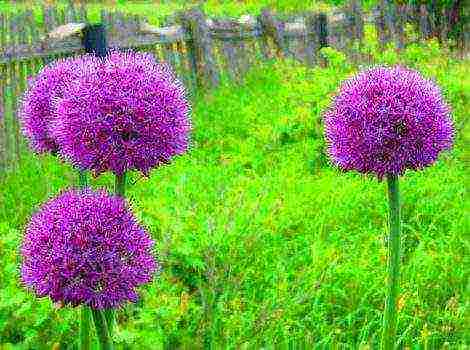Detailed description and characteristics of Belarusian cabbage
The variety of cabbage "Belorusskaya" has a long history and is gaining more and more connoisseurs. For more than seventy years, gardeners and large agricultural enterprises have been relying on this particular variety. According to the description, the variety has a large number of advantages.
Description and characteristics of Belarusian cabbage
In 1937, the Institute of Breeding bred a variety of white cabbage, which is resistant to frost and a variety of diseases in terms of characteristics. It quickly entered the list of agriculturally recognized varieties.
"Belorusskaya" differs in that the maturation period is quite suitable for cold regions... During the mass gain, the head of cabbage grows stronger, low temperatures have a beneficial effect on the quality.
According to the description, this is a late variety with a ripening period. from 110 to 130 days... Planting of this variety can begin even in June, since it is preferable to organize harvesting in late September - early October.
Heads of cabbage are round, slightly flattened, strong and dense. When fully ripe, they reach 3 - 4 kg... They do not crack, they easily tolerate a short-term drought, if they did not suffer a drought in the first two weeks after planting in the ground. Easy to transport.
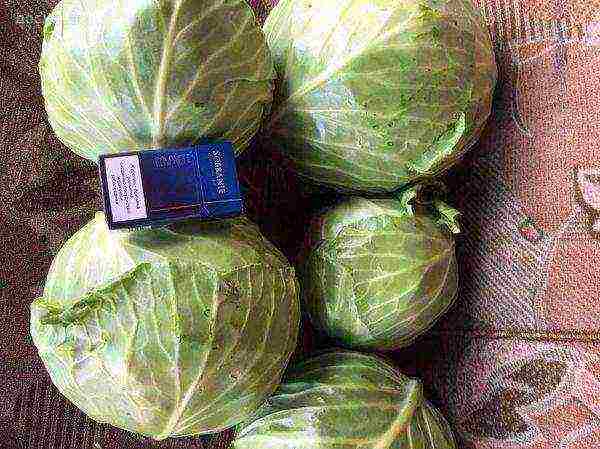
Advantages and disadvantages
Of the advantages, one can single out the main features thanks to which this variety is chosen by gardeners:
- Excellent keeping quality for more than 3 months;
- High taste in any form;
- Density of a head of cabbage and a small stump;
- High content of vitamin C;
- Excellent quality when fermented;
- Productivity.
With proper care in the first three weeks, yield and disease resistance are significantly increased.
There are disadvantages that significantly reduce the desire of beginners to use this variety annually:
- Unlike hybrids, it is prone to keel;
- Prone to vascular bacteriosis;
- It attracts pests, although this is an indicator of the quality of the cabbage;
- Picky in the first month in watering, and when transplanting.
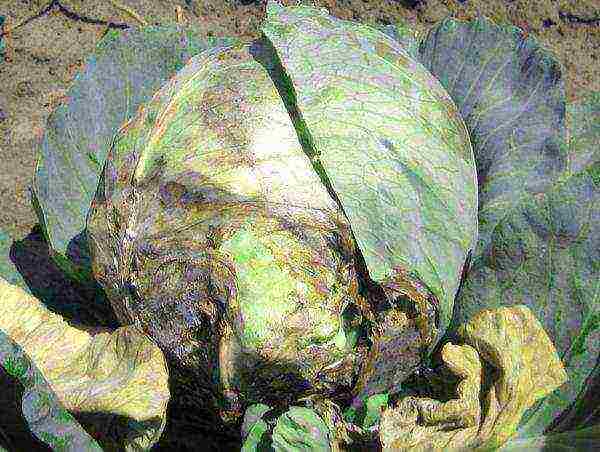
Growing seedlings
There is no need to rush to plant the seeds ahead of time. The optimal time is mid-Mayif you plan to use it for fermentation or storage.
If this variety is used for harvesting, some can be sown in early May, and in September it is safe to use the crop for conservation.
Seedling seeds do not require special preparation and soaking... The main thing is to prevent the soil from drying out. Seeds sprout on days 4 - 7 amicably enough, and quickly reach for the light, so make sure that the seedlings are in a lighted window, or in a greenhouse.
For sowing seeds, choose sod soil, do not add black soil. The presence of loam in the soil is useful for seedlings.
After planting the seeds, spill the soil with warm water, cover with foil, and leave it until the first shoots appear.
Growth conditions
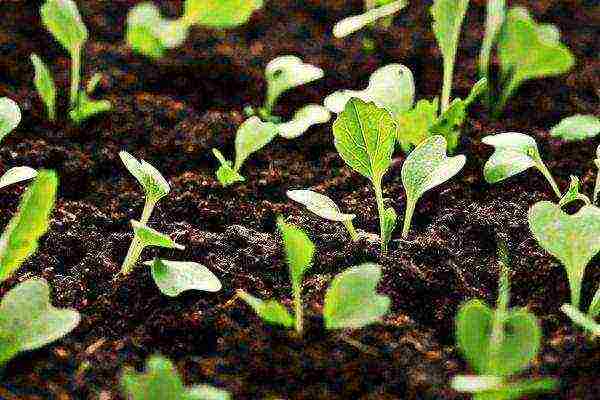
Seedlings, for full development, must more time in the sun, the soil should not dry out... If there is an opportunity for this, on warm days, take it outside, or in a greenhouse. At night, be sure to bring it into the house, since the temperature is optimal for healthy growth - from 18 degrees above zero, and in May the nights are quite cold.
It is necessary to plant seedlings in the ground later than one month of age, and ideally at the age one and a half months... The stalk should be short and dense, thicker than a pencil.
Choose loamy soil, and a place on the site that is illuminated by the sun in the morning. This is important for cabbage. She will perfectly survive the absence of day and evening sun, but without morning sun she will be sick.
Despite the fact that this is a moisture-loving plant, do not break the beds in the lowland, and moreover, the beds must be made higher - groundwater is destructive to the roots.
Growing soil
Form the bed from north to south, and then the shoots will receive enough sunlight. If possible, sow mustard in early spring and dig up the soil along with mustard seedlings before planting.
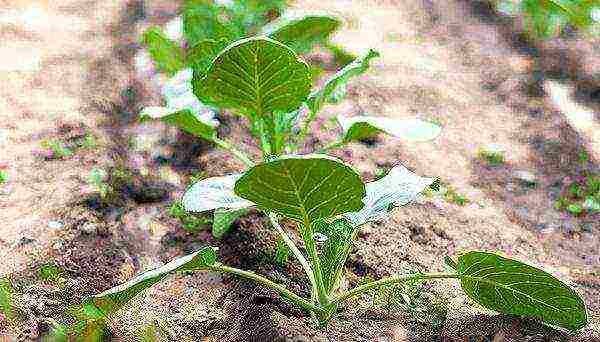
Put a handful of black soil (last year's manure), a tablespoon of wood ash in each hole. Do not overdo it with fertilizers, cabbage did not like excessively greasy soil, so it will not curl for a long time.
Planting seedlings in the ground
Aged 35 - 50 days, seedlings must be planted in the ground. To do this, you should choose a cool day, and best of all rainy days, during which the seedlings will easily survive the transplant and get sick.
Make holes with distance 50 to 50 cm... spill each hole with two liters of water, put in humus and ash.
Place one root in each hole, put earth on top of the root, and press lightly. Do not add a lot of soil, the first leaves that remain on the stem should remain on top of the ground.
Drizzle again with a little water. If the weather is sunny, it is necessary to shade the seedlings for the first 3 - 4 days. After the cabbage leaves have risen, the barriers and shelters must be removed.
Care after landing
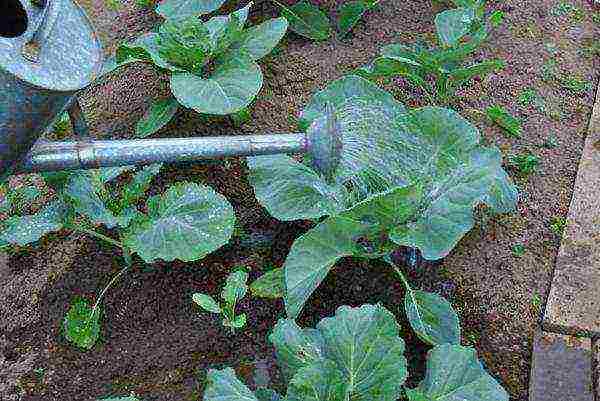
After planting, watering is necessary everyday... In the evening, after the sun is closer to sunset, more than a liter of water must be poured under each root.
During the first week, there is no need to loosen the root zone, and after a week, before watering, you need to loosen it.
Stop daily watering two weeks after planting. It is necessary to allow the sprouts to dry completely, and let them stand completely dry for a couple of days.
Necessary watch out for midges and caterpillars... When the midge first appears, sprinkle the cabbage with soapy water, and sprinkle with wood ash on top.
Dilute laundry soap in a bucket of warm water to make the water white and soapy. Spray the leaves with this solution, especially the middle - the connection of the leaves with the cuttings, and the ground around.
When caterpillars appear, it is necessary to use special treatment products. Processing should be done in calm weather, preferably in the evening, after the sun is closer to sunset.
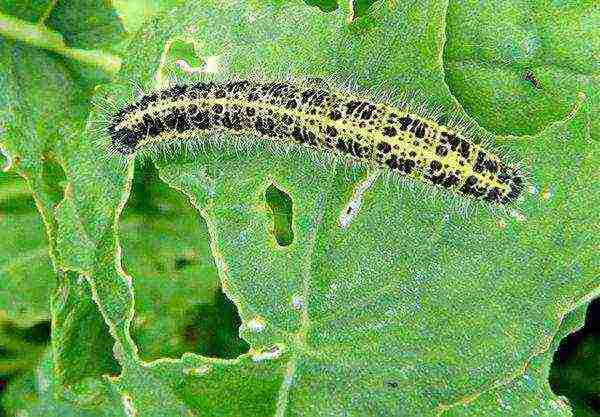
Diseases and their prevention
This variety is more prone to keel disease than hybrid varieties. Therefore, it is worth planting in spring on new land, not planting seedlings where the cabbage was last year. If you find a root with a keel, do not throw it into compost, but burn it, or take it out with garbage.
With vascular bacteriosis, the yield and taste are greatly reduced. Another name for the disease is Black Rot.It manifests itself primarily in the darkening of the veins.
Wet rot appears after vascular bacteriosis, a head of cabbage, even cut off, and stored in storage quickly decays.
For the prevention of bacteriosis, crop rotation must be observed, weeds must be removed in time, and the appearance of pests that spread the disease must be monitored. Damaged plants must be removed from the garden and destroyed.
Harvesting and storage
Late September - early October, the variety is fully ripe.
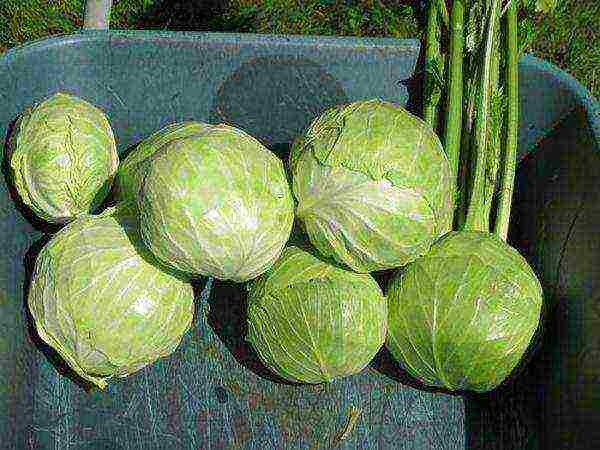
When harvesting, do not leave long stalks on the heads of cabbage. Enough 3 cm.if the heads of cabbage are kept intact. To do this, select whole, even heads of cabbage up to 3 kg., hang in the storage by the stump, and make sure that they do not germinate or get wet.
The variety has both connoisseurs, who annually choose it as the main one, and opponents. Having calculated all the pros and cons, you will definitely make the right decision for your garden. Considering that there are quite a few non-hybrid varieties left, and they become weaker, the variety behaves well even in harsh conditions, and gives an excellent yield.
